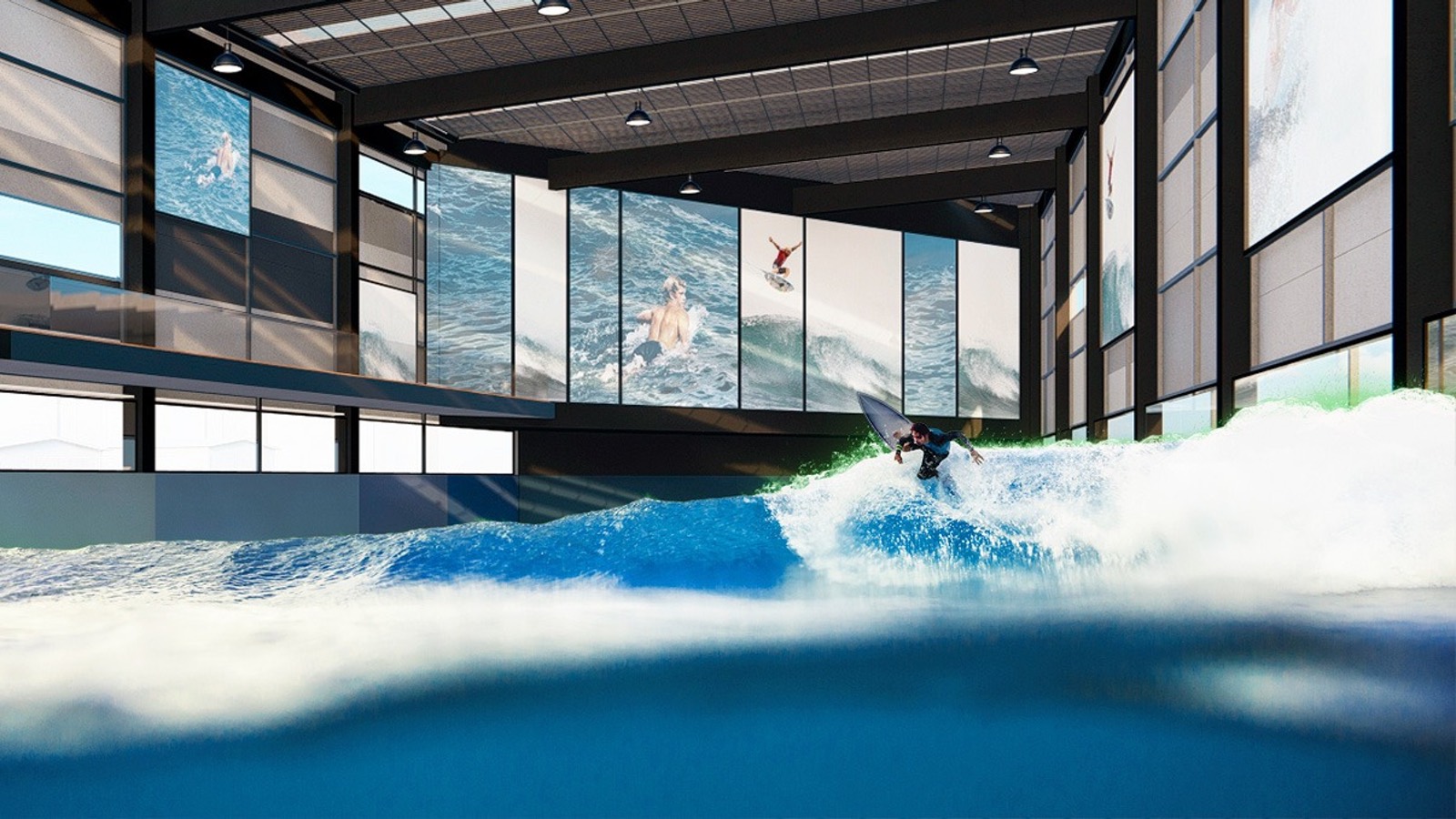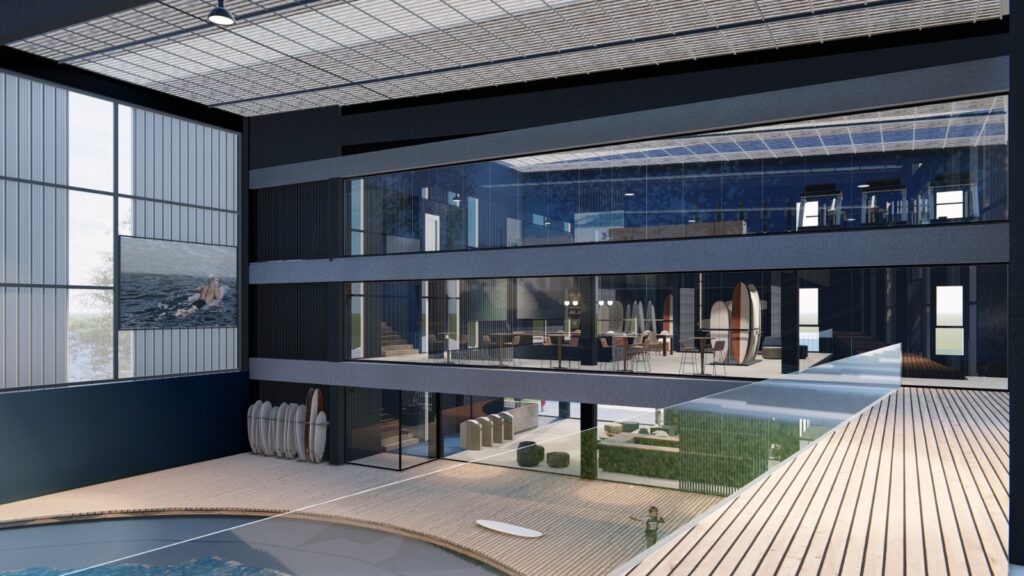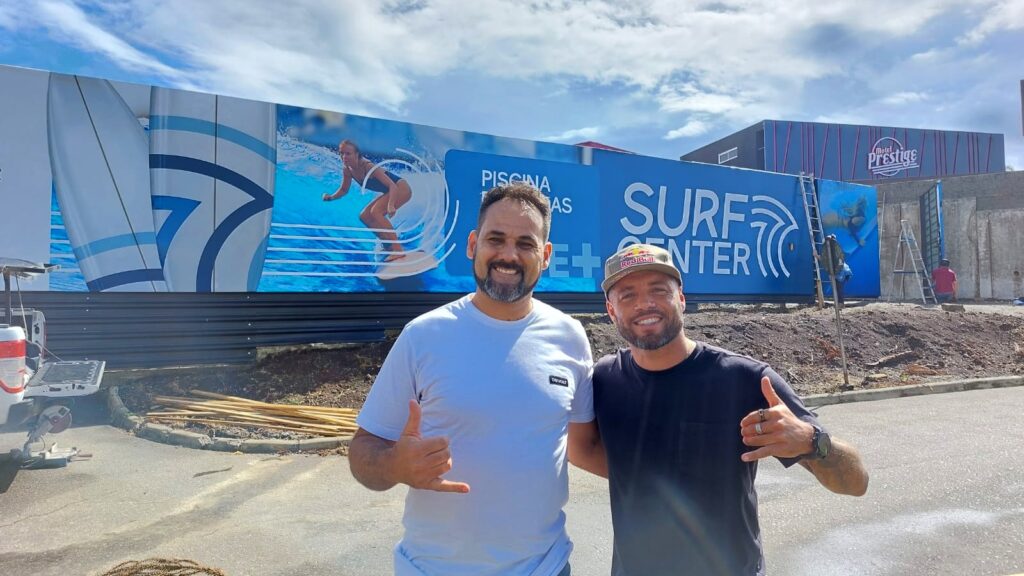New Brazilian wave pool technology aims to disrupt market with low-cost pools

$10K buy-in and $200 monthly grants access to new tech which plans on opening 20 new surf clubs in the next five years throughout Brazil. Surf Center, scheduled to launch in 2024, claim to be the world’s first heated and covered wave pool outside of North America.
Brazil is ground zero for a recent boom in wave pools. But there’s a catch. Most people can’t surf them.
You can drool over the perfect waves being pumped out across the city of São Paulo between Praia da Grama and Fazenda Boa Vista, yet it’s just torture unless you are a pro surfer, well-connected in the industry, or very wealthy.
Both pools require luxury real estate purchases well beyond the financial means of most to gain access. And there are more pools on the way in Brazil that follow this general model.
Attaching wave pools to luxurious real estate developments has proven to be a successful method to get the first pools built in the country, however, it’s exclusive.
One Brazilian company, Surf Center, thinks the market is ripe for disruption.

Eight years after developing the concept, Surf Center has already broken ground on their new wave pool in the southern Brazilian metropolis of Curitiba. When the pool launches in the second semester of 2024 it will be a series of firsts for the South American wave pool sector. It will be the first glimpse of Brazilian-made wave technology, the first indoor wave pool, and the first heated wave pool.
And with the new technology comes a new business model. Surf Center doesn’t claim to have created the world’s best pool wave. They’ve designed a relatively small one meter, low-cost wave that lowers the barriers of entry for both investors and surfers.
“We have all the knowhow to make bigger waves,” Surf Center’s Founder Luiz Balioli told WavePoolMag. “It would be simple to make a two-meter wave for someone who has the investment to make one, but since the focus of our project is on accessibility, we made a wave that’s more accessible – it’s very surfable for beginners, intermediates, and even training for advanced surfers.”
“It will be the most viable pool in Brazil for people to actually have a reality to surf,” Balioli added.
The wave will be a one-meter-high right that runs for 40 meters, 8-12 seconds, through an indoor pool. To put it in perspective, the relatively small pool footprint will use just two million liters of water compared to the 29 million used at Praia da Grama, according to Balioli. The system can pump out 240 waves per hour, four per minute, with the pool only requiring a one-minute break between sets.
The technology, which has been dubbed Surf Center’s GT3K wave generator, is pneumatic. In layman’s terms, it uses pressurized air to transfer energy to the water in the pool, which creates waves.
However, Balioli says Surf Center has given this existing technology a new twist.
“Pneumatic waves already exist, like PerfectSwell and Wave Loch,” explained Balioli. “But they use a technique that creates a junction of energy, starting in deep water and moving towards shallow water. You can make rights or lefts, but the wave loses size and energy over the course of the ride if you don’t add additional air boxes to support the wave’s height. It demands a lot of extra boxes and blowers. We were able to utilize a bottom contour and air chamber placement that maintains the size of the wave for longer. Our wave is 3-4 feet, but it runs for 40 meters at about that size, only losing at most 20-30% of its height.”
As part of Surf Center’s mission to make their pool more accessible, they have created a pricing scheme that, while by no means inexpensive, will be the most affordable option on offer in Brazil.
To surf the pool, you have to buy a membership, which is currently being sold at the discount rate of around USD $10,000. On top of this one-time cost, once the center opens there will be monthly membership fees of about USD $200. Each membership will be able to include up to four members, with one wave pool session per week available for a member (just one person per week, not everyone on the membership). The membership also grants access to the entire facility, which will include a gym, yoga, skatepark, restaurants, and a surf shop, among other things.
Balioli reports that they’ve already sold 326 of the 600 memberships available at this early sale price, which will eventually ramp up to around USD $20,000.
While $10,000 may still be relatively expensive for the average surfer, the investment from a developer’s perspective is significantly less when compared to the alternatives. According to Surf Center, the cost of building and operating the pool is one third that of competitors.
Big savings come from the pneumatic technology, which sits out of the water and requires less installment and operations costs. Other savings will come from the small pool size and indoor environment that eliminates most evaporation loss of water.
So, you may be thinking: “Cut to the chase and show me videos of the wave!”
The reason you haven’t seen – and won’t see for a while – viral videos of this new wave pool technology is that Surf Center in Curitiba is the first full scale model to be built. Up to this point, only a pool at one tenth the scale had been created for testing, obviously without surfers.
Banking on a technology that has not yet been tested at full scale certainly implies a bit of risk, but according to Balioli it’s all part of the plan.
“It’s a calculated risk,” said Balioli. “There is way less risk to start with a smaller wave like this to understand the whole process. In that regard, this first step makes much more sense. It’s been eight years of research and development involving a team of engineers and specialists. We performed all the simulations and market analysis. I know it’s not the ideal situation, but through testing and our engineering partnership we got the confidence to take this first real step here in Curitiba.”

While the wave pool models built for the elite in Brazil have proven successful, at least in the short term, Surf Center will be the guinea pig to test the appetite of wave pool surfing in Brazil among a somewhat less wealthy demographic.
Surf Center’s co-Founder, Fabricio Stedile, flaunted the preliminary interest in their technology in a press release, stating, “We are negotiating (for new pool locations) in places like Brasília, São Paulo, Mato Grosso do Sul, the countryside of Paraná, and the northeast, with the expectation of opening 20 new Surf Clubs in the next five years, throughout Brazil and also abroad.”
Whether Surf Center is successful in hitting their ambitious target of 20 pools in five years, their new pool technology and business model will be an interesting case study. Brazil, one of the biggest surfing markets in the world, hasn’t been tested with a pool that is even remotely accessible to the masses.
While Surf Center still isn’t nearly as accessible as a $129 hour-long session at Waco Surf in the US, for example, it is Brazil’s first tangible step in that direction. Whether it’s Surf Center, or someone else, whoever can figure out how to create a wave pool business model that the average Brazilian can afford, could be sitting on a gold mine.
Related Coverage
